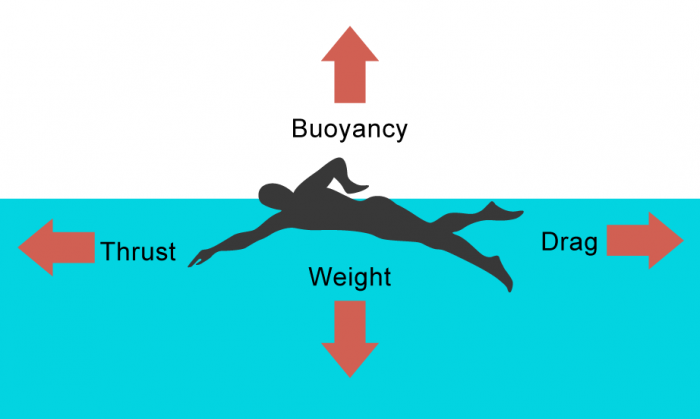Forces are all around us. They change the shape of things, their speed or even the direction they are moving in.
Contact forces only occur when two or more objects are touching. An example is when we throw a ball - we have to touch it before we throw it. Non-contact forces affect objects from a distance. An example is a magnet which can pull objects towards it from far away! Other non-contact forces are gravity and static electricity.
There can be many forces acting on an object at the same time. We use arrows to show forces. Take a look at the forces acting on the swimmer in the diagram below.

Drag pulls the person backwards, as it is actually water resistance. Thrust is the forward force the swimmer produces with his/her body, while swimming. Weight is the force of gravity pulling him/her downwards and buoyancy is the reaction force from the water (also called upthrust).
You'll have looked at forces in KS2 so, with the information above and your previous knowledge, this activity should help to consolidate your understanding.

